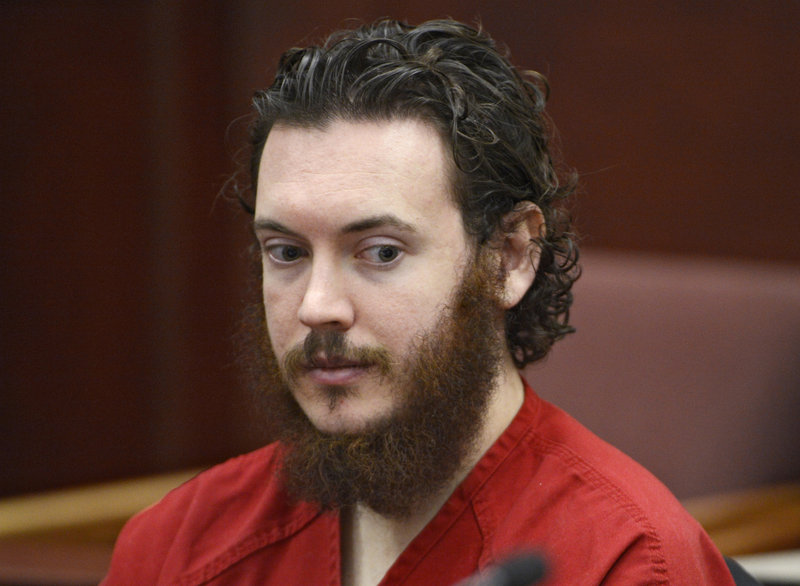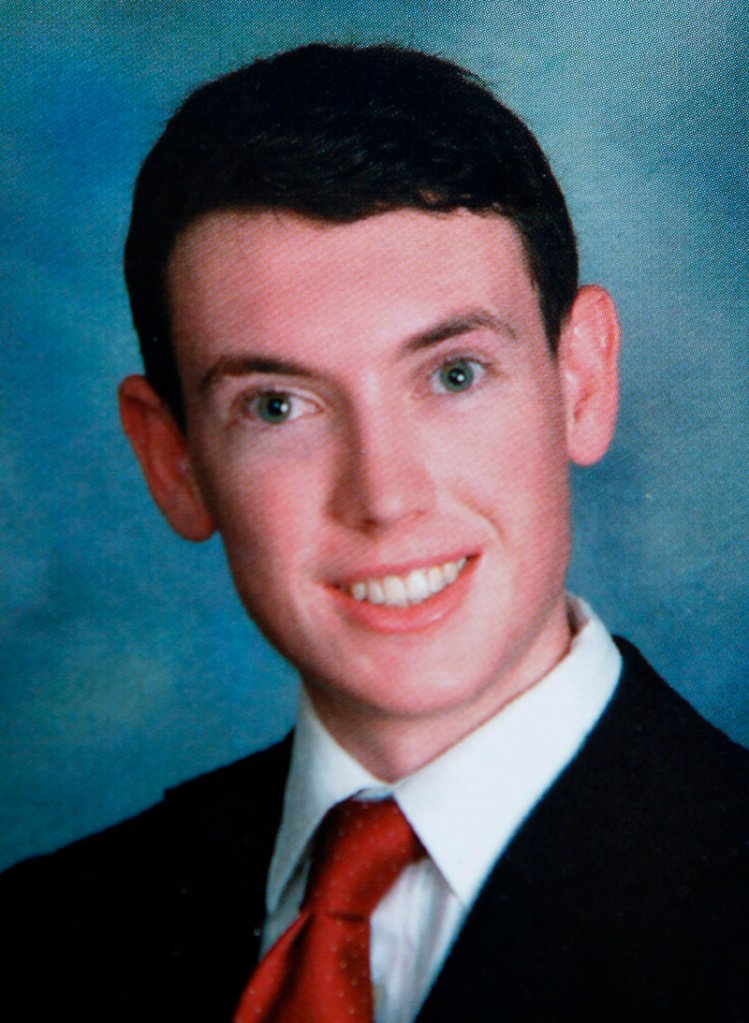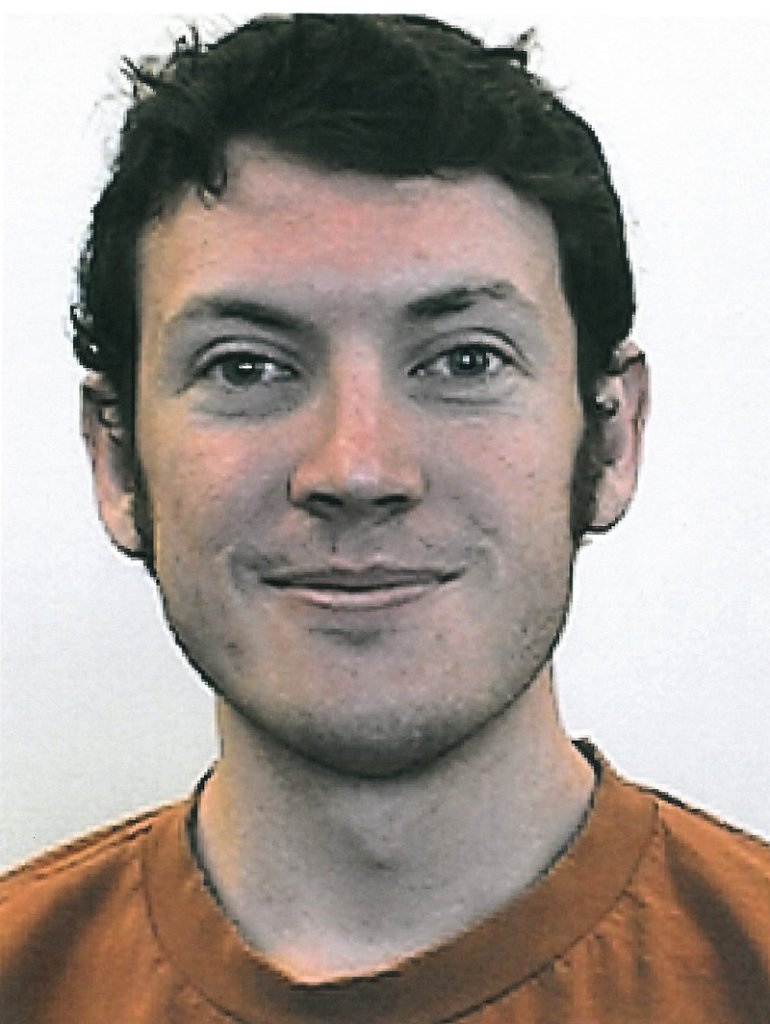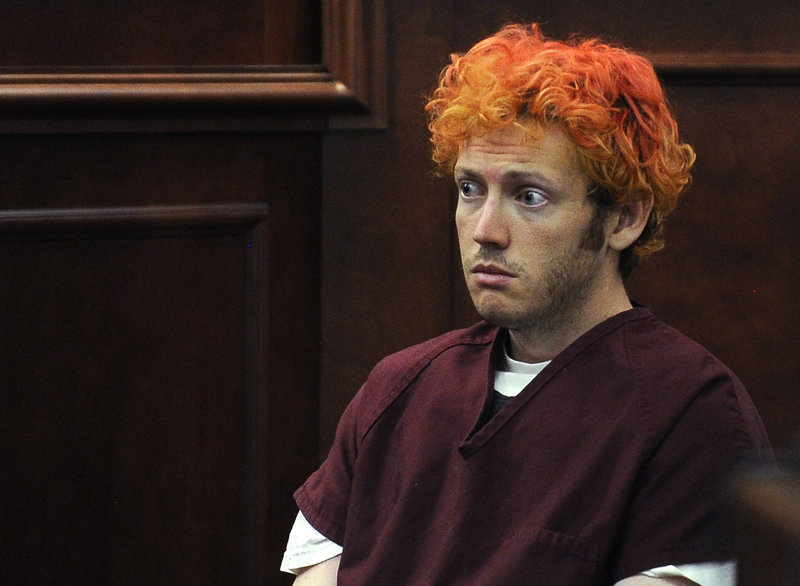DENVER – His face was hidden behind a gas mask, and he was costumed from head to toe in a police-style helmet, black cargo pants and black vest. He was such an improbable sight, standing at the front of a theater where a Batman movie was playing, that some in the audience thought he was part of the show.
Then he started shooting.
A year later, the pale and boyish face of James Eagan Holmes is in plain view each time he shuffles into court to face charges of planning and executing his onslaught. But whatever illness or evil might have seized the promising young neuroscientist and contorted him into a mass killer, as prosecutors allege, is still hidden.
Random and disjointed fragments of Holmes’ story have emerged, but they don’t add up to a coherent story line.
Holmes is accused of killing 12 people and injuring 70 in the suburban Denver theater on July 20, 2012. He has pleaded not guilty by reason of insanity, and his lawyers say he carried out the shootings “in the throes of a psychotic episode.” But they battle fiercely to keep the details of his mental state a secret.
CONFLICTING BEHAVIOR
What is known is deeply contradictory.
As a teen, Holmes was withdrawn and rarely started conversations, according to those who knew him. When he was arrested behind the Aurora theater minutes after the shootings, standing quietly with his hands resting atop his car, he was obedient and eerily limp, police said.
But during the shootings, he allegedly barked out orders and appeared to single individuals out, recalled Stephanie Davies, a witness. “He would shout, ‘What are you doing? I said stand up!’” Davies said.
Applying to graduate schools, Holmes strained to leave an impression of stability and maturity. “My life could have gone in a completely different direction had I not possessed the foresight to choose the path of knowledge,” he wrote in one application.
But photos exhibited in court show him preening before his smartphone camera like a self-absorbed adolescent on the night before the massacre.
In one, he wore black contact lenses and a black stocking cap, and two tufts of his dyed-orange hair curled out like delicate little horns on either side of his head. In another, he grinned at the camera, a pistol held below his face. A third showed some of his guns and gear laid out on a red sheet on his bed.
As an 18-year-old, Holmes got laughs by telling people one of his ambitions was to own a Slurpee machine.
As a 24-year-old, he went on a weapons spree, buying an assault rifle, a shotgun, two handguns, more than 6,000 rounds of ammunition, high-capacity ammunition magazines, police-style body armor and enough chemicals to rig his apartment into one massive, potentially lethal booby trap, investigators said.
Holmes built crude but complicated detonators meant to lure a neighbor or passer-by into inadvertently setting off the explosives in his apartment at about the time the theater massacre was under way, the investigators said. The idea was to divert police from the theater.
No one took the bait, although one neighbor came perilously close when she went to investigate blaring music that was part of the lure.
“It would have ignited and the whole apartment would have exploded or caught fire,” FBI bomb technician Garrett Gumbinner said in January.
Holmes was a sought-after college graduate who won a federal grant for full tuition and $26,000 a year in living expenses for a Ph.D. neuroscience program at the University of Colorado, Denver. But in June 2012, at the end of his first year, he flunked a major exam, and his professors advised him to find another career, prosecutors said. Holmes quit the program that month.
In court, Holmes has spoken just two words aloud — “yeah” and “no,” both in answer to the judge. He looked dazed at his first hearings, and later he appeared awe-struck. But now he mostly looks nonchalant.
Citing a judge’s gag order and privacy laws, those who know the most about Holmes’ life in Colorado say little.
But there were hints that his life had taken a dangerous turn.
In March 2012, four months before the shootings, he told a classmate “about wanting to kill people … and that he would do so when his life was over,” prosecutors said in a filing.
‘WILL YOU VISIT ME?’
Prosecutors also said he opened accounts at two dating websites in 2012 and wrote in his profile, “Will you visit me in prison?”
In June, about five weeks before the shootings, a psychiatrist who had been treating Holmes told a campus police officer that Holmes had made “homicidal statements” and threatened her. Holmes started seeing the psychiatrist, Dr. Lynne Fenton of the University of Colorado, Denver — for reasons unexplained — sometime after he joined the university neuroscience program in 2011.
None of the warnings or the bizarre reversals in Holmes’ behavior answers the critical question: Why would a seemingly harmless college student, without so much as a traffic ticket on his record, amass an outlandish arsenal, dye his hair orange and stage a wanton and theatrical attack on hundreds of innocent strangers?
Some answers may come during Holmes’ trial, scheduled to start in February. Holmes will undergo a mental evaluation at the state hospital this summer, and the results will be part of his insanity defense.
But even that could stay hidden.
Holmes’ attorneys have said he could withdraw his insanity plea based on the examination. If that happens, the results might never be made public.
Send questions/comments to the editors.







Success. Please wait for the page to reload. If the page does not reload within 5 seconds, please refresh the page.
Enter your email and password to access comments.
Hi, to comment on stories you must . This profile is in addition to your subscription and website login.
Already have a commenting profile? .
Invalid username/password.
Please check your email to confirm and complete your registration.
Only subscribers are eligible to post comments. Please subscribe or login first for digital access. Here’s why.
Use the form below to reset your password. When you've submitted your account email, we will send an email with a reset code.